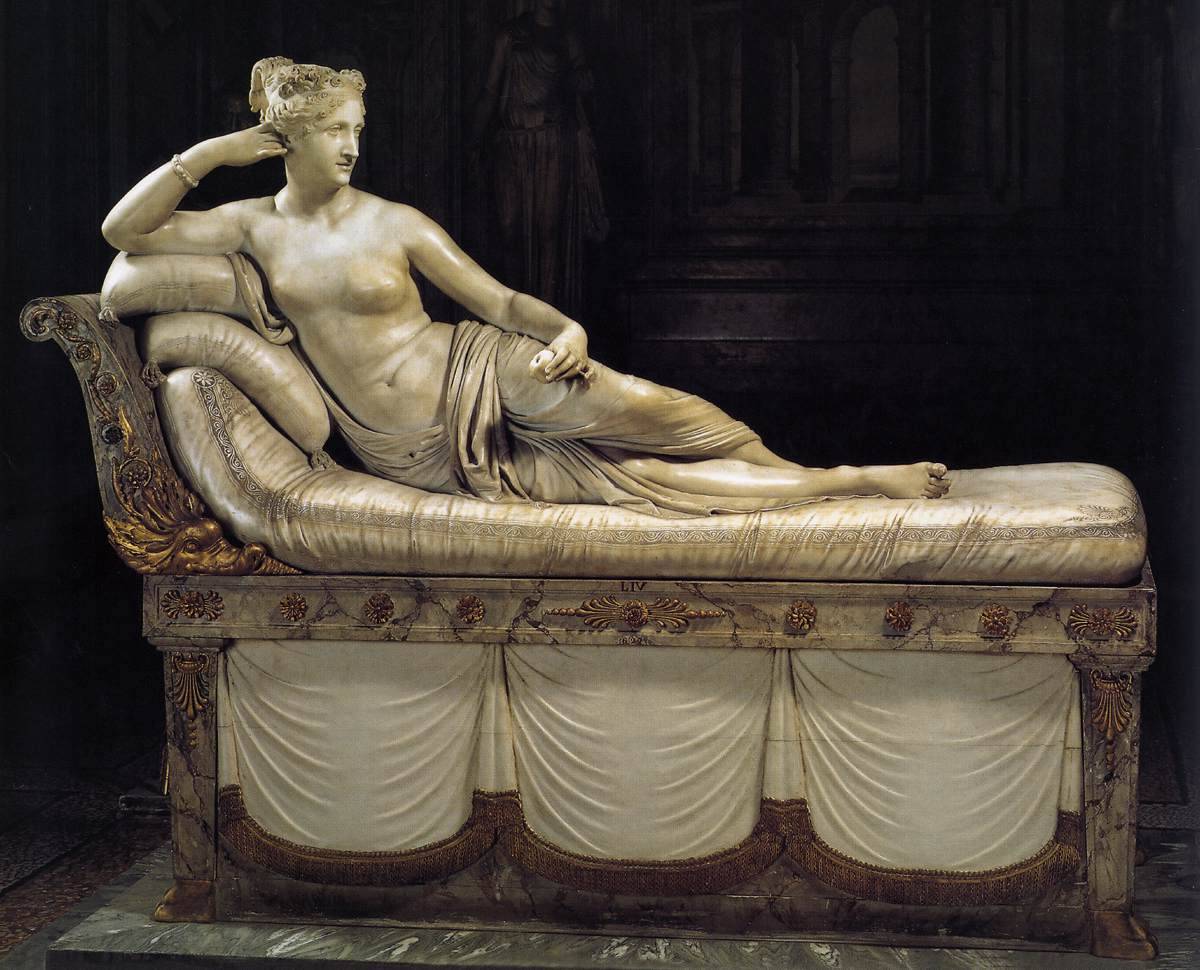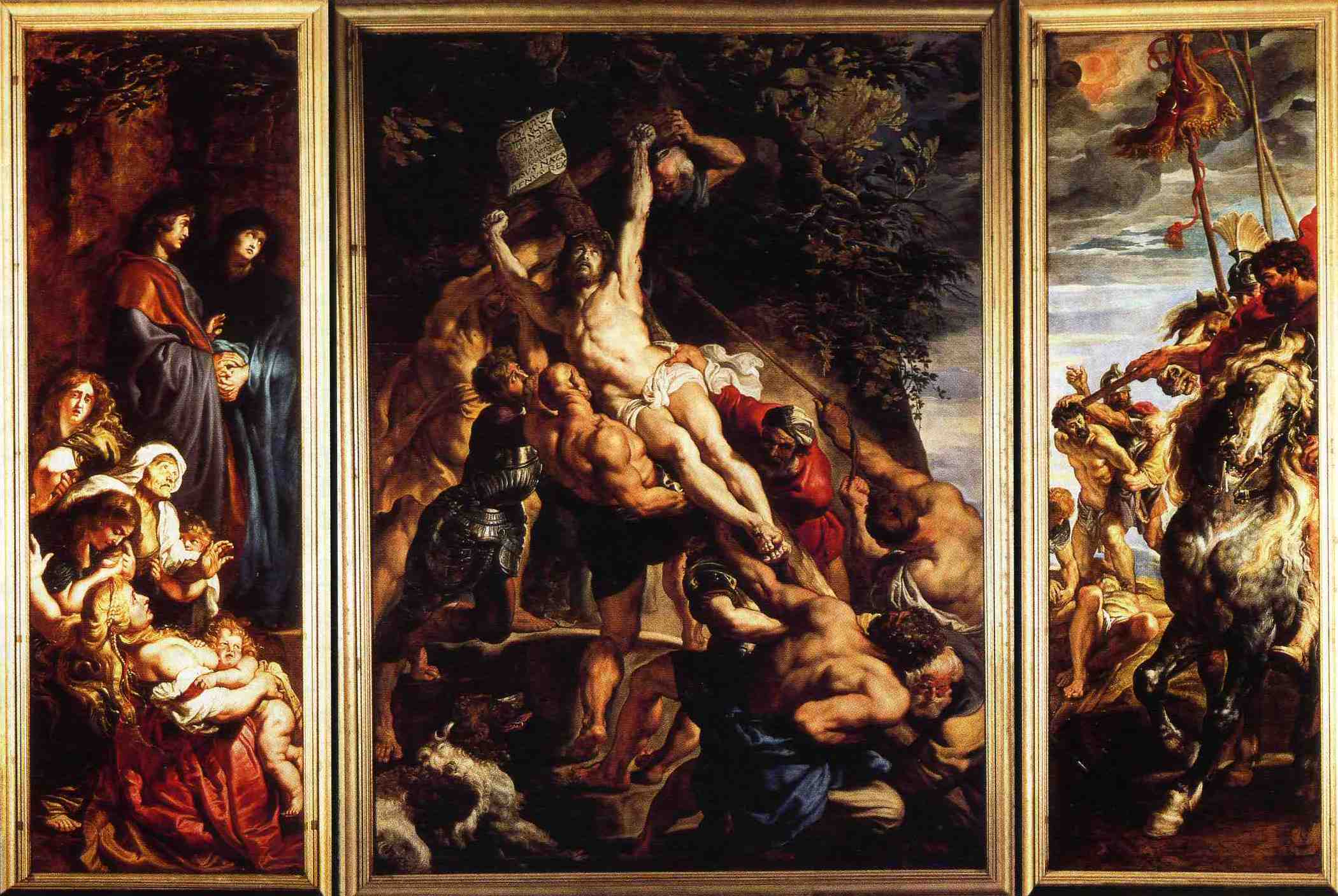Wednesday, November 28, 2012
Paula as Venus by Canova
"Paula Borghese as Venus" by Antonio Canova
1808 Marble, 6'7" long
This painting stood out to me because it reminded me of Venus of Urbino, the prototype for the naked lady. While clutching the fruit of temptation, this Venus appears intentionally posed for the sculpture. This is Napoleon's sister, who requested to pose as the Greek goddess of love in a classical manner.
The Village Bride: Greuze
"The Village Bride" by Jean-Baptiste Greuze
1761
Oil on Canvas 3'x3' 10 1/2"
This painting stood out to me because of its narrative nature and Dutch elements. Shown above is the passing of the dowry from the father to the groom. The central point of focus appears to be the hands exchanging currency. The family appears to be feeling a variety of emotions while listening to the father speak. This painting probably serves as a social commentary. Indicators of this include the well dressed family and clean household.
George Washington by Horatio Greenough
"George Washington" by Horatio Greenough
1840 Washington D.C
Marble, 11'4" high
Smithsonian American Art Museum
Commissioned by congress, Horatio depicted Washington in a Zeus- like neoclassical style. This sculpture stood out to me because it was not in Washington's character to be boisterous or shirtless. I read that one congressman said that they should chunk it into the Potomac river.
To the knowledgable American, this picture is comical in the sense that is directly contrary to the nature of George Washington.
Death of Marat by David
"Death of Marat" by Jacques-Louis David
1973 Oil on Canvas
5'5"x4' 2 1/2"
This painting served as political propaganda after the revolution of 1789. David and Marat were friends, and he depicts him gracefully succumbing to death after being assassinated by being stabbed to death.
This painting is unusual in nature because of the subject. Grace and death are pictured with careful attention to lighting, muscle detail, and lax posture. Marat appears to be writing something pertaining to the revolution in his green bath tub. Its purpose is to inspire the revolution and to record the monumental event.
My favorite thing about this piece is the peaceful expression on Marat's face.
1973 Oil on Canvas
5'5"x4' 2 1/2"
This painting served as political propaganda after the revolution of 1789. David and Marat were friends, and he depicts him gracefully succumbing to death after being assassinated by being stabbed to death.
This painting is unusual in nature because of the subject. Grace and death are pictured with careful attention to lighting, muscle detail, and lax posture. Marat appears to be writing something pertaining to the revolution in his green bath tub. Its purpose is to inspire the revolution and to record the monumental event.
My favorite thing about this piece is the peaceful expression on Marat's face.
Monday, November 5, 2012
Rubens: Arrival of Marie de Medici
PETER PAUL RUBENS, Arrival of Marie de’ Medici at Marseilles 1622–1625. Oil on canvas, 12’ 11 1/2” x 9’ 7”. Louvre, Paris.
This painting stood out to me because of the regal manner in which Rubens depicts Marie de Medici. She looks like she has an impact on everyone present and seems to immediately cause a commotion. Her power and influence is apparent with the blowing of horns and the gaping mouths. The reaction is visually visceral in a regal and beautiful perspective.
Rubens: Elevation of the Cross
PETER PAUL RUBENS
"Elevation of the Cross" from Saint Walburga, Antwerp, 1610. Oil on wood, 15 ’ 1 7/8” x 11’ 1 1/2” (center panel), 15' 1 7/8" x 4' 11" (each wing). Antwerp Cathedral, Antwerp.
This painting stood out to me because of the intense drama in all three of the panels. The middle panel depicts jesus being raised up on the cross- his pale body elevated by these muscular men. On the left panel is a group of onlookers with Mary and John standing beside a group of ladies. On the right panel Roman soldiers are depicted persecuting the two criminals mentioned in the story of Jesus's crucifixion. The expressions and color as well as the detail are very particular as well as the prevalent color of red- suggesting violence or a bloody scene.
Subscribe to:
Comments (Atom)





